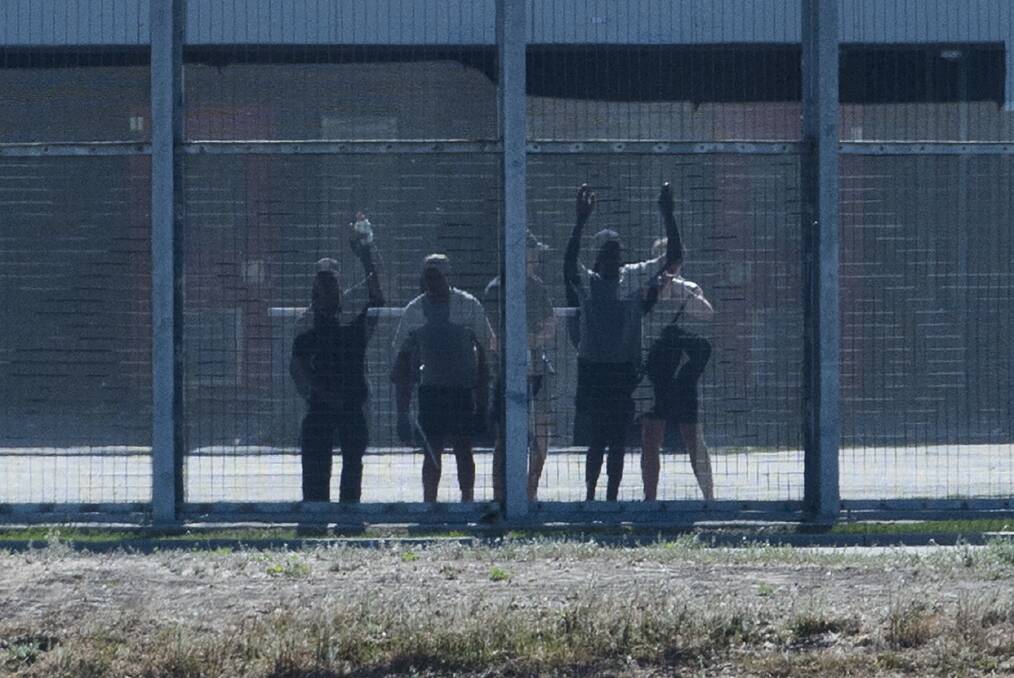
A PLAN to reduce lockdowns and rotations due to staff shortage at Malmsbury Youth Justice Precinct to zero should be implemented as a matter of priority, the Victorian Ombudsman says.
Subscribe now for unlimited access.
or signup to continue reading
It comes after the Ombudsman found staff shortages were responsible for about 40 per cent of lockdowns at the facility in 12 months - almost 5,500 recorded instances.
Victorian Ombudsman Deborah Glass expressed concern at the rate of isolation at Malmsbury, one of three facilities inspected as part of investigations into practices related to solitary confinement of children and young people.
Port Phillip Prison and Secure Welfare Services were the other two facilities involved.
A total of 13,653 lockdowns were reported at Malmsbury Youth Justice Precinct in the 12 months from February 28, 2018.
The Ombudsman noted that the actual number of lockdowns was likely considerably lower, because staff at the centre appeared to be in the habit of recording one incident per child or young person affected.
However, 90 per cent of children and young people surveyed as part of the Ombudsman's investigations said they had been isolated due to a lockdown at Malmsbury.
"It appears that staff shortage at Malmsbury is commonplace," the report stated.
One of the 27 recommendations in the document was for the Department of Justice and Community Safety to reduce to zero the number of lockdowns and rotations due to staff shortage at the facility.
The Ombudsman also recommended the state government prohibit solitary confinement and review how young people are managed in the corrections system.
Solitary confinement is defined in the report as the physical isolation of individuals for 22 or more hours a day without meaningful contact.
The document makes a differentiation between solitary confinement and practices of separation and isolation.
"Legislation and official procedures acknowledge that children and young people should be isolated only as a last resort and for the minimum time necessary, but we found the procedures do not translate into practice," Ms Glass said.
"The direct impact is that many of the practices in both our youth justice and prison systems are likely to be contrary to law, incompatible with Victoria's human rights legislation, oppressive, discriminatory or simply, wrong."
The 'out of home' care Secure Welfare Services provided at two Melbourne campuses was the only instance in which seclusion appeared to the Ombudsman to be used as a last resort.
"Comparing the three facilities, we found a direct correlation between the use and length of isolation practices, and the extent to which a facility recognised the harm caused by them," Ms Glass said.
She identified several practices at Malmsbury which she said appeared to have been "taken contrary to law", and which might have been incompatible with the Human Rights Act.
They included isolation not being used as a last resort or in response to immediate threat; and instances of isolation lasting longer than was recorded, or was approved by a relevant officer.
The Ombudsman said lockdowns attributed to staff shortages at Malmsbury had decreased from 2017 levels of 78 per cent, but not enough.
"Whether the result of an incident, in which all felt punished for the actions of a few, or as a result of staff shortages, they were widely and justifiably perceived by young people to be unfair," Ms Glass wrote.
Story continues below embedded report
The report described the overall situation at Malmsbury as a "mixed picture".
"We found a genuine commitment at many levels to the welfare of young people and their rehabilitation, but were disturbed by a culture that appeared to prioritise security," it stated.
It provided the example of compliant young people being moved around the facility in handcuffs, escorted by eight staffers.
"This appeared to be driven more by fear of negative headlines in the event of an incident, than the risks actually presented," the report said.
The report highlighted a disproportionate use of behavioural isolation on Aboriginal and Torres Strait Islander young people at Malmsbury.
It said Indigenous young people represented 14 per cent of the precinct's population, but 20 per cent of the behavioural isolations.
There were 1214 isolations for behavioural reasons at Malmsbury within the 12 month reporting period.
More than half were attributed to an immediate threat to others' safety.
The report said Malmsbury's staff had a limited understanding of the effects of isolation.
By way of example, it said a 16-year-old Aboriginal boy known to self-harm in isolation was nonetheless isolated for hours until his condition required hospital treatment.
The report noted that lockdowns and rotations at Malmsbury were causing "significant frustration" among young people.
"It is not difficult to see how this frustration can contribute to escalated behaviour," it said.
The report also said the use of isolation did not appear to correspond with an increased sense of safety or lower levels of work-related stress for staffers.
The state government has welcomed the Ombudsman's report.
Corrections Minister Ben Carroll said the government was considering the 27 recommendations, with work underway to implement a number of them.
"We make no apologies for making sure these facilities are as safe and secure as possible for our hard working staff and young people," he said. "You can't rehabilitate young people in an unsafe environment - that's why we've invested $1.2 billion over the past four years to overhaul the youth justice system."
A recruitment campaign has attracted 370 new youth justice workers.
A Department of Justice and Community Safety spokesperson said work to reduce incidents of isolation included the development of a comprehensive Workforce Strategy to address recruitment and training needs, as well as the introduction of an Intensive Intervention Unit for complex young people.
Have you signed up to the Bendigo Advertiser's daily newsletter and breaking news emails? You can register below and make sure you are up to date with everything that's happening in central Victoria.


